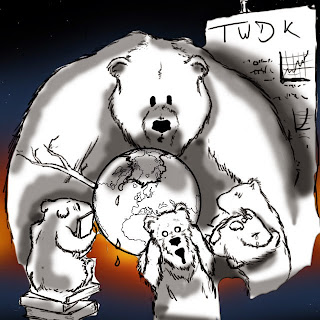You may be surprised (or perhaps horrified) to know that you have spiders on your face right now. In addition to the millions of bacteria, viruses and fungi that make up our skin microbiome (the community of microorganisms on our skin) we have microscopic eight-legged creatures that also make a home in our skin. In humans there are two species; Demodex folliculorum which reside in our hair follicles and Demodex brevis which are found in our sebaceous glands[1]. They are just two of the 46,000 different species of mites that form the Arachnid family along with spiders and ticks.
While studies suggest that we aren’t born with these creatures on our skin, but acquire them over time as a result of skin to skin contact with our mothers, how the spiders get onto us remains
 |
| Thankfully, the arachnids on your face aren't as big as this Christmas Lights Jumping Spider! Jumping spiders sometimes follow convoluted routes when hunting, even losing sight of their prey. How and why they do this, especially given the size of their brains, is also an open question. Image credit: public domain, via USGS (Flickr) |
While studies suggest that we aren’t born with these creatures on our skin, but acquire them over time as a result of skin to skin contact with our mothers, how the spiders get onto us remains
a fundamental mystery. Their numbers increase as we get older, but we don’t know why this is[2,3]. To date scientists have been unable to culture Demodex long term outside the body, as they dry out very easily[4,5]. As a result they are difficult to research and little is known about their life cycle apart from the observations of Spickett in 1961. He suggested that the mites roam the surface of our skin at night in order to breed. Females lay eggs within our hair follicles where they hatch and develop into adults and the cycle starts again[6].



![Solar photovoltaics and concentrated solar power contribute 16 and 11 percent to global overall consumption, respectively. [3] Electrical apprentice Eric Penel works on the solar reference array, which has been installed on the roof of the Shaw Theatre at NAIT's Main Campus in Edmonton.](https://blogger.googleusercontent.com/img/b/R29vZ2xl/AVvXsEjRquOYN5aUEOVLcLiIe9yu5d5mc9Pd4Hzi8hZZKDXA9QKJwh6DIYb4qoNEdm3cdPcAzAy7PA-JaRvCQbJuMQqgSfXA6PKFXSCNXjPjyVVbyYW3lct7aH4ASsfmcsx_bidn8HIdQzu5knc/s640/NAIT+solar+reference+array.jpg)














